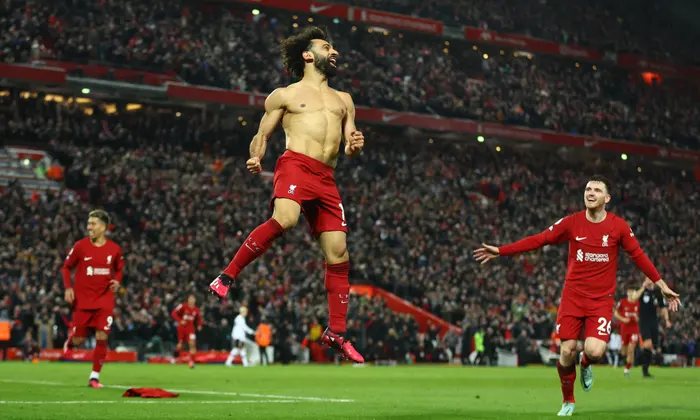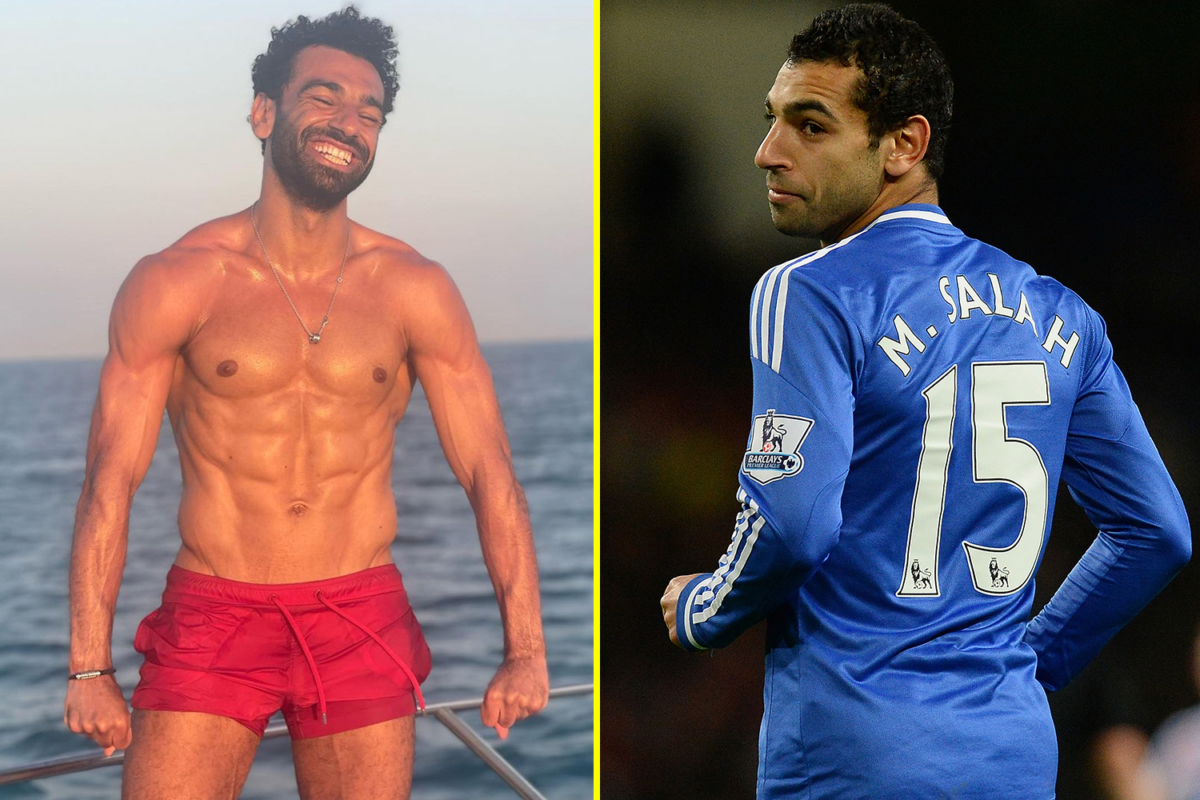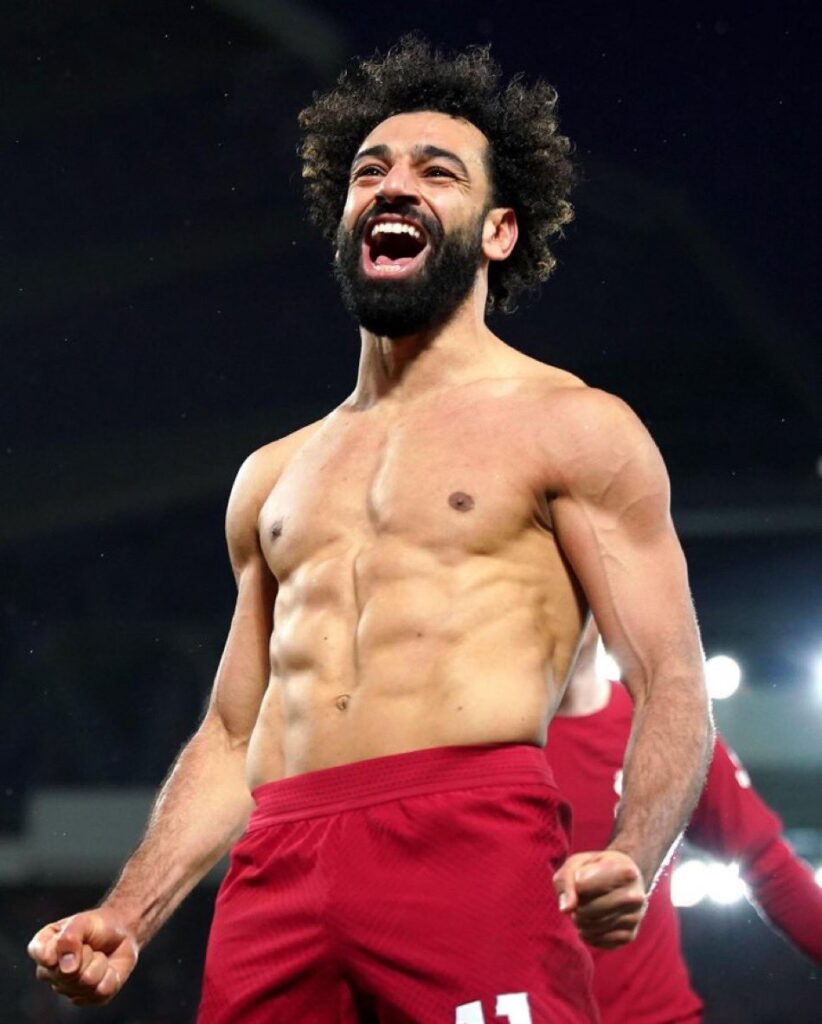Mohamed Salah has been making headlines recently for his record-breaking performance against Manchester United. Liverpool demolished the Red Devils 7-0 in what was the club’s biggest defeat in over 90 years.
His brace in the game not only helped Liverpool bury United six feet under but also took his tally of Liverpool goals in the English Premier League to 129, surpassing Robbie Fowler and becoming the club’s all-time greatest goal-scorer in the tournament. It’s a feat that Salah himself has described as “special”.
However, that is not the only thing he has been in the headlines for. As the 30-year-old celebrated his record-breaking goal by taking his shirt off, he showed off his incredible 5 ft 9in frame and what a sight it was.

Salah has undergone a significant body transformation since joining Liverpool in 2017, and he now, weighing at approximately 70 kg, is in peak physical condition.
From his days in Chelsea and Roma, no one would have imagined that Salah was capable of this – both physically and technically.
As a young winger in Chelsea, he was very skinny and focused on speed instead of muscle.
He then moved to Roma, where he polished his skills but still kept his focus on agility and very little on getting ripped.
However, in 2017, this all changed. He moved to Liverpool a complete player, with technical skills polished and all focus on his physicality.
Having played in the Premier League before, he knew that he would need to be strong to survive in this physical environment, and he did just that.
So, how did Salah achieve such an impressive transformation?

It’s clear that he takes his fitness and training very seriously. In an interview with ON Ent, he revealed that his typical day includes early morning training sessions, recovery and therapy work, gym workouts, stretching, and pool sessions.
He also incorporates a range of different exercises into his training routine, including weight training, bodyweight work, plyometrics, yoga, and stretching.
His timetable is crazy.
Normally, I get up early to go for training which starts either in the morning or in the afternoon.
Then I come for recovery for almost two hours. Therapy for any injuries or specific massage so you mitigate any suffering of your body.
After that, I go to the gym here at the club which is optional for players. After training, I do stretching and recovery again. Finally, I go to the pool at the club or with Macca [his daughter] at home. I finish all these activities around 7 or 8 pm.
Salah’s commitment to his fitness regime is all the more impressive when you consider that he often trains during Ramadan when he is fasting during daylight hours.
In a video posted on social media, Salah could be seen hitting his home gym at 2.40 am on a Sunday morning, likely altering his schedule to allow himself to replenish his energy before sunrise.

But it’s not just about working hard – Salah also pays close attention to his nutrition.
In an interview with CNN, he explained that his nutritionist allows him to eat what he wants because he doesn’t have any fat on his body.
Nutrition is so important, it’s part of the game. It has helped with my recovery, allowed me to sleep better and helped my body adapt quickly…My nutritionist says that because I don’t have any fat on my body, I can eat what I want. I also don’t drink so it’s fine.
It’s worth remembering that everyone’s body is different, and what works for one person may not work for another.
Salah’s physique is a product of his hard work and dedication, and it’s clear that he takes his fitness and training very seriously. Even undergoing Hijama therapy to remove any impurities from his body.
Meanwhile, Adama Traore’s physique has earned him comparisons to Hollywood action heroes, despite his insistence that he doesn’t even do any weight training.
Either way, Salah’s commitment to his fitness and training has helped him become one of the best footballers in the world, and his record-breaking performance against Manchester United is just the latest example of his incredible talent.



